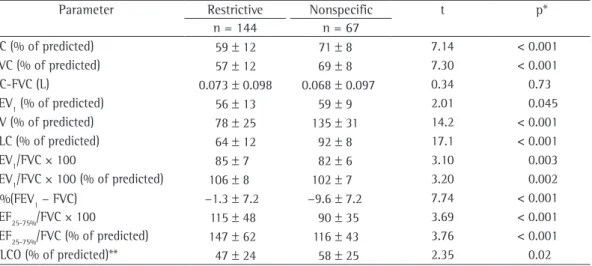PDF EN Jornal Brasileiro de Pneumologia 4 11 english
Texto
Imagem



Documentos relacionados
In view of the lack of data in the Brazilian literature, the objective of the present study was to determine the rate at which satisfactory spirometry (pulmonary function
In view of the lack of data in the Brazilian literature, the objective of the present study was to determine the rate at which satisfactory spirometry (pulmonary function
Objective: To look for correlations between lung function and cardiac dimension variables in morbidly obese patients, in order to test the hypothesis that the relative size of
Objective: To describe the clinical characteristics, lung function, radiological findings, and the inflammatory cell profile in induced sputum in children and adolescents with
Objective: To evaluate the prevalence of pulmonary function abnormalities and to investigate the factors affecting lung function in patients treated for pulmonary
OBJECTIVES: The present study aimed to investigate the trends in changes in pulmonary function and the risk factors for pulmonary function deterioration in patients with
The medical charts of all patients admitted to the Bronchoscopy Clinic of the Hospital das Clínicas da Universidade Estadual de Campinas (HC-Unicamp, State
It has been well established that, in addition to the pulmonary involvement, COPD has systemic consequences that can lead to peripheral muscle dysfunction, with greater muscle